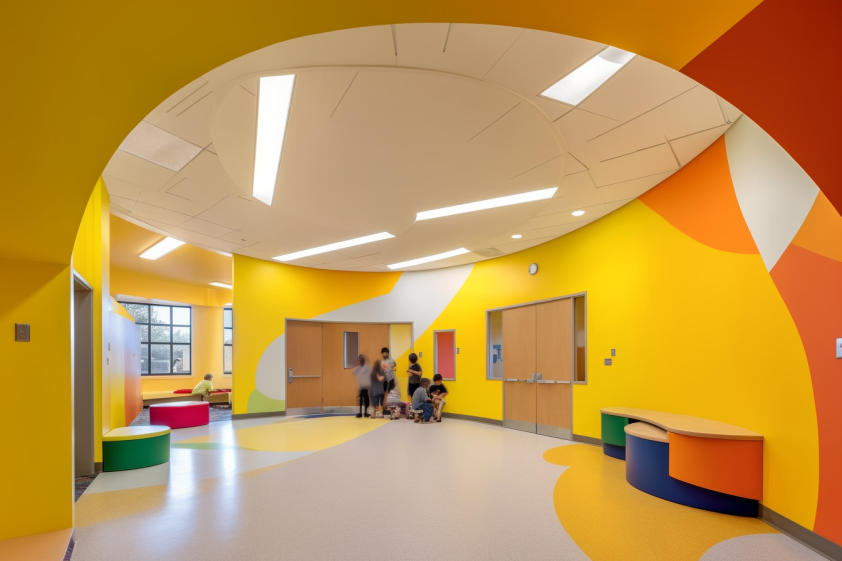I’ve had the pleasure of working with a small cohort of teachers this year to redesign lessons for deeper learning opportunities. I called it the “Future Shift Fellowship” for two reasons: 1) I hoped that this group would begin moving our district into the future by focusing on student-centered lesson design and 2) we would be using the 4 Shifts protocol to guide our work.
To say that I’m pleased with what we’ve done this year would be an understatement. Each of the members of the cohort has stepped far beyond their comfort zone with their work. And, if you asked their students, I’m sure you’d hear how much they appreciate the opportunities for learning.
But you may be asking why we used the 4 Shifts for this work?
I’m happy to explain…
Whenever I work with teachers, my number one thought is that whatever we do together must be easy to implement. Teachers have little or no time to spend on new strategies or techniques in the classroom once the school year begins. Their days are filled with so many tasks beyond just those of teaching students that it’s difficult to squeeze in learning, even when there are demonstrable benefits to that learning.
So, any changes must be easy to make. Also, if the changes made can provide a visible impact on student learning, whether that be in the form of student engagement, assessment, or simply just changing how students talk about learning and school, then the changes are worth the time.
These two reasons above all others are why I chose to use the 4 Shifts protocol to guide the work of our fellowship.
The 4 Shifts Protocol, designed by Scott McLeod and Julie Graber, is a comprehensive framework that aims to help educators transition from traditional teaching methods to more modern, student-centered approaches that promote deeper learning opportunities. The protocol focuses on four key shifts: deeper thinking and learning, authentic work, student agency and personalized learning, and technology infusion.
- Deeper Thinking and Learning: This shift encourages teachers to design activities that require students to engage in higher-order thinking skills, such as analysis, evaluation, and creation, rather than just memorization and recall. By doing so, students develop critical thinking abilities and become more adept at problem-solving and decision-making.
- Authentic Work: The protocol emphasizes the importance of connecting classroom activities to real-world situations and contexts. This shift encourages teachers to create tasks with a genuine purpose, audience, and impact beyond the classroom, fostering relevance and meaningful student learning experiences.
- Student Agency and Personalized Learning: This shift focuses on providing opportunities for students to take ownership of their learning and make choices about what and how they learn. Teachers are encouraged to create learning environments that support individual learning preferences and needs, allowing students to progress at their own pace and follow their interests.
- Technology Infusion: The protocol recognizes the power of technology in enhancing learning experiences and facilitating the other three shifts. Teachers are encouraged to integrate technology tools and resources into their instruction, allowing students to access information, collaborate with peers, and demonstrate their learning in innovative ways.
By implementing the 4 Shifts Protocol, teachers can create more engaging and meaningful learning experiences for their students, fostering a deeper understanding and long-lasting knowledge. This approach prepares students for success in the modern world and cultivates a love for learning and a growth mindset.
Does the 4 Shifts protocol answer all the questions? Of course not. In fact, sometimes you have more questions than you started with after working through the protocol. This is why it is key to only focus on one of the shifts at a time when redesigning your lessons.
You could change a lesson to the super ultimate checks all-the-boxes learning experience in one go, but you and your students would likely be so exhausted and confused from all the changes that any benefit would be lost.
But, the protocol gives you the structure to make small changes to your lessons, whether you are a classroom teacher or an instructional coach working with teachers to make the changes.
I can’t think of a better tool to use to begin moving toward more student-centered learning.
The Eclectic Educator is a free resource for all who are passionate about education and creativity. If you enjoy the content and want to support the newsletter, consider becoming a paid subscriber. Your support helps keep the insights and inspiration coming!
